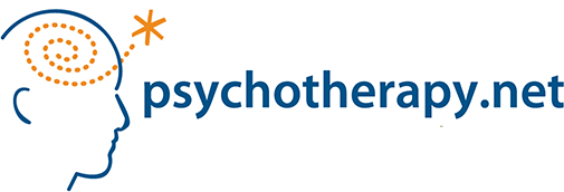When clients begin trauma therapy many hold onto the hope that healing will follow a clear path. They picture a beginning, a middle, and an end. A moment where the past stops hurting, their relationships feel easier, and their bodies finally release the tension they’ve carried for years. But as therapists, we know it rarely unfolds that way. Healing is not linear. It comes in waves. Progress can be followed by regression. A moment of insight might be lost in a fog of overwhelm. A good week can lead to a hard month. It’s not a step-by-step climb. It’s a spiral. Clients return to the same emotional terrain again and again, but each time, hopefully, with a little more clarity, a little more stability, and a little more strength.
This stage can be disorienting. Clients often wonder if they’re regressing or doing it wrong. In truth, they are beginning to do something radically new. The nervous system often perceives unfamiliar experiences as potential threats, even when those changes are healthy. That is why growth frequently shows up as discomfort.
As a therapist, I have found it to be essential to help normalize this phase and support clients in tracking these shifts as evidence of progress. What once felt unsafe begins to register as tolerable. And over time, it begins to feel like safety. This is not failure. This is the nervous system recalibrating.
For clinicians interested in exploring the neurobiological foundations of this process, resources like Bessel van der Kolk’s work, and that of the National Child Traumatic Stress Network offer helpful frameworks for understanding how neuroplasticity supports recovery. I keep reminding my clients and myself that discomfort is often a sign of meaningful change. With time, what feels unfamiliar now can become a source of strength and stability.
The body carries what the mind may no longer recall. My client’s nervous system often reacts before their conscious awareness catches up. These responses made sense in the context of trauma, even if they seem confusing or disproportionate now. As a therapist, I can help clients begin to recognize these embodied patterns with curiosity and compassion. The healing process often starts with noticing—subtle shifts like shallow breathing, clenched jaws, or emotional distance in the room. These cues are the nervous system’s way of communicating safety or threat.
Rather than encouraging clients to override these sensations, I guide them toward listening to their bodies with gentleness. When I help create space between sensation and reaction, I offer a new way forward. That space is often where integration and healing begin. In learning about how the nervous system holds trauma and how regulation begins with awareness, I have found the Polyvagal Institute to be a particularly useful resource.
In one session, I have found that a client may speak with clarity and confidence. The next, they might come in feeling discouraged after falling into old patterns. Maybe they people-pleased, avoided conflict, or ignored their own needs. They begin to question whether any of their progress was real. It was!
Healing is not linear. The strategies that once helped a client survive can resurface, especially when they are tired, anxious, or uncertain. These moments are not evidence of failure. They are part of the natural rhythm of recovery. What begins to shift is their awareness. They notice the pattern more quickly. They pause before reacting. They ask themselves what they truly need in that moment. These subtle changes are meaningful. They mark the growth of resilience.
I have also found it important to help clients see these moments for what they are. Not as regressions, but as opportunities. This is where change begins to deepen. When someone catches themselves repeating an old behavior and chooses even a slightly different response, they are practicing something new. There is also something powerful that happens in these harder moments. Pain and struggle often reveal where care is still needed. They slow things down. They invite both the client and therapist to listen more closely to what is underneath the reaction.
This is where the deeper benefits of pain and suffering begin to emerge. These experiences have the potential to strengthen emotional awareness, deepen empathy, and reconnect a person with their values. Suffering, while never sought out, can become a guide that point to unmet needs, long-held beliefs, or unresolved grief that is asking to be seen. These moments help build presence, not perfection. Setbacks are not the end of healing. They are woven into the work. I have supported my clients in seeing these experiences not as detours, but as part of the path forward.
Clients may feel lonely even as they move toward what’s best for them. They may grieve connections that once felt familiar, even if those dynamics were rooted in dysfunction or emotional distance. Letting go of old patterns often feels like loss, even when it is progress.
At junctions such as these, it’s important to normalize these growing pains. Healing doesn’t always feel good at the moment. It can challenge long-standing relational roles and bring uncertainty to familiar bonds.
These disruptions also signal movement toward something more grounded, more honest, and more self-respecting. Support clients in recognizing that discomfort in relationships is not a sign of regression and can be a sign of emerging authenticity. Healing doesn’t always preserve the old. Sometimes, it clears space for relationships that are built on emotional safety, mutual care, and respect.
It is particularly important to name and normalize this part of the process. Healing is demanding. It takes emotional energy, and it does not always move at a steady pace. Help your clients understand that needing rest is not failure. Taking a break is not giving up. Slowing down does not erase progress. Sometimes the most meaningful work happens when clients step away and give themselves time to integrate what they’ve already uncovered. Growth needs room to breathe. It needs softness and space. When clients return, whether next week or next month, I acknowledge that return. Remind them that showing up, even imperfectly, is still showing up. That, too, is healing.
Clients often come into therapy carrying unspoken pressure. They want to get better quickly, move on from the past, and prove they’re strong by needing less. Some may feel shame for still struggling or frustration that their healing is taking “too long.”
What matters is consistency, not perfection. It’s the willingness to return to work again and again, even after a setback. It’s the slow rebuilding of trust within themselves. I invite my clients to move at a pace that honors their body and nervous system. I help them see that slow progress is still progress. I let them know that taking the time they need is not only acceptable but it is wise. Therapy is not about rushing toward resolution. It is about creating a space where healing can unfold naturally, with patience, care, and room to breathe.
Postscript
If your clients’ healing journeys feel slow, confusing, or filled with setbacks, that doesn’t mean they’re getting it wrong. In fact, it often means they’re doing the hard, necessary work of integrating change. Recovery from trauma is rarely a linear process. It moves in spirals, detours, and pauses because that’s part of what makes it real.
As therapists, we can support this process by holding space for grief, for uncertainty, and for the parts of healing that take time. We can remind our clients that it’s okay to move at their own pace. That healing isn’t measured by speed but by presence, consistency, and the courage to keep showing up.
File under: The Art of Psychotherapy, Musings and Reflections
Like what you are reading? For more stimulating stories, thought-provoking articles and new video announcements, sign up for our monthly newsletter.
Clients Might Not Recognize Themselves at First
One of the earliest shifts I’ve witnessed in my trauma work is a client beginning to question long-held coping strategies, survival instincts, and automatic responses. These were the very tools that kept them safe in environments where safety was uncertain. They may start setting boundaries and feel a wave of guilt they can’t quite name. They may say no and spiral into fears of abandonment. They may feel anger surface for the first time in years and have no framework for how to manage it.This stage can be disorienting. Clients often wonder if they’re regressing or doing it wrong. In truth, they are beginning to do something radically new. The nervous system often perceives unfamiliar experiences as potential threats, even when those changes are healthy. That is why growth frequently shows up as discomfort.
As a therapist, I have found it to be essential to help normalize this phase and support clients in tracking these shifts as evidence of progress. What once felt unsafe begins to register as tolerable. And over time, it begins to feel like safety. This is not failure. This is the nervous system recalibrating.
For clinicians interested in exploring the neurobiological foundations of this process, resources like Bessel van der Kolk’s work, and that of the National Child Traumatic Stress Network offer helpful frameworks for understanding how neuroplasticity supports recovery. I keep reminding my clients and myself that discomfort is often a sign of meaningful change. With time, what feels unfamiliar now can become a source of strength and stability.
The Nervous System Has a Story to Tell
Trauma doesn’t just live in your client’s memories. It lives in their bodies. It often shows up in the form of chronic tension, unexplained exhaustion, or a racing heart in situations that seem calm on the surface. I have noticed how a client becomes anxious in safe environments, withdrawn when connection is offered, or goes numb during moments that would typically bring joy. These aren’t signs of resistance or dysfunction. They are adaptive nervous system responses developed to survive past experiences.The body carries what the mind may no longer recall. My client’s nervous system often reacts before their conscious awareness catches up. These responses made sense in the context of trauma, even if they seem confusing or disproportionate now. As a therapist, I can help clients begin to recognize these embodied patterns with curiosity and compassion. The healing process often starts with noticing—subtle shifts like shallow breathing, clenched jaws, or emotional distance in the room. These cues are the nervous system’s way of communicating safety or threat.
Rather than encouraging clients to override these sensations, I guide them toward listening to their bodies with gentleness. When I help create space between sensation and reaction, I offer a new way forward. That space is often where integration and healing begin. In learning about how the nervous system holds trauma and how regulation begins with awareness, I have found the Polyvagal Institute to be a particularly useful resource.
In one session, I have found that a client may speak with clarity and confidence. The next, they might come in feeling discouraged after falling into old patterns. Maybe they people-pleased, avoided conflict, or ignored their own needs. They begin to question whether any of their progress was real. It was!
Healing is not linear. The strategies that once helped a client survive can resurface, especially when they are tired, anxious, or uncertain. These moments are not evidence of failure. They are part of the natural rhythm of recovery. What begins to shift is their awareness. They notice the pattern more quickly. They pause before reacting. They ask themselves what they truly need in that moment. These subtle changes are meaningful. They mark the growth of resilience.
I have also found it important to help clients see these moments for what they are. Not as regressions, but as opportunities. This is where change begins to deepen. When someone catches themselves repeating an old behavior and chooses even a slightly different response, they are practicing something new. There is also something powerful that happens in these harder moments. Pain and struggle often reveal where care is still needed. They slow things down. They invite both the client and therapist to listen more closely to what is underneath the reaction.
This is where the deeper benefits of pain and suffering begin to emerge. These experiences have the potential to strengthen emotional awareness, deepen empathy, and reconnect a person with their values. Suffering, while never sought out, can become a guide that point to unmet needs, long-held beliefs, or unresolved grief that is asking to be seen. These moments help build presence, not perfection. Setbacks are not the end of healing. They are woven into the work. I have supported my clients in seeing these experiences not as detours, but as part of the path forward.
Healing Can Disrupt Your Relationships—And That’s Okay
As clients begin to heal, their relationships often start to shift. They may stop over-functioning. They may begin setting firmer boundaries or expressing their needs more clearly. Behaviors they once tolerated may no longer feel sustainable. These shifts, while healthy, can create waves. Not everyone in the client’s life will welcome or understand the changes. And that can bring grief, confusion, or even guilt.Clients may feel lonely even as they move toward what’s best for them. They may grieve connections that once felt familiar, even if those dynamics were rooted in dysfunction or emotional distance. Letting go of old patterns often feels like loss, even when it is progress.
At junctions such as these, it’s important to normalize these growing pains. Healing doesn’t always feel good at the moment. It can challenge long-standing relational roles and bring uncertainty to familiar bonds.
These disruptions also signal movement toward something more grounded, more honest, and more self-respecting. Support clients in recognizing that discomfort in relationships is not a sign of regression and can be a sign of emerging authenticity. Healing doesn’t always preserve the old. Sometimes, it clears space for relationships that are built on emotional safety, mutual care, and respect.
It’s Normal to Feel Tired and Take Breaks of Healing
There have been moments in my clients’ journeys when the work feels like too much. They may grow tired of telling their story, tired of tracking every trigger, tired of examining old wounds. The weight of self-reflection can feel heavy. They might withdraw for a while. Maybe they spend more time scrolling, bury themselves in work, or cancel a session or two. These behaviors are not necessarily resistance. More often, they are signs of fatigue.It is particularly important to name and normalize this part of the process. Healing is demanding. It takes emotional energy, and it does not always move at a steady pace. Help your clients understand that needing rest is not failure. Taking a break is not giving up. Slowing down does not erase progress. Sometimes the most meaningful work happens when clients step away and give themselves time to integrate what they’ve already uncovered. Growth needs room to breathe. It needs softness and space. When clients return, whether next week or next month, I acknowledge that return. Remind them that showing up, even imperfectly, is still showing up. That, too, is healing.
Clients often come into therapy carrying unspoken pressure. They want to get better quickly, move on from the past, and prove they’re strong by needing less. Some may feel shame for still struggling or frustration that their healing is taking “too long.”
There’s No Deadline for Healing
Therapeutically, it’s important to gently challenge this mindset. There is no prize for speed. No gold star for needing the least amount of help. Healing is not a race, and there is no finish line.What matters is consistency, not perfection. It’s the willingness to return to work again and again, even after a setback. It’s the slow rebuilding of trust within themselves. I invite my clients to move at a pace that honors their body and nervous system. I help them see that slow progress is still progress. I let them know that taking the time they need is not only acceptable but it is wise. Therapy is not about rushing toward resolution. It is about creating a space where healing can unfold naturally, with patience, care, and room to breathe.
Postscript
If your clients’ healing journeys feel slow, confusing, or filled with setbacks, that doesn’t mean they’re getting it wrong. In fact, it often means they’re doing the hard, necessary work of integrating change. Recovery from trauma is rarely a linear process. It moves in spirals, detours, and pauses because that’s part of what makes it real.
As therapists, we can support this process by holding space for grief, for uncertainty, and for the parts of healing that take time. We can remind our clients that it’s okay to move at their own pace. That healing isn’t measured by speed but by presence, consistency, and the courage to keep showing up.
File under: The Art of Psychotherapy, Musings and Reflections






